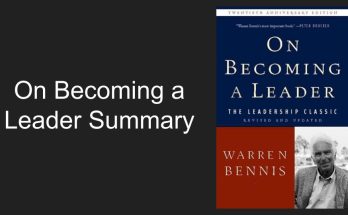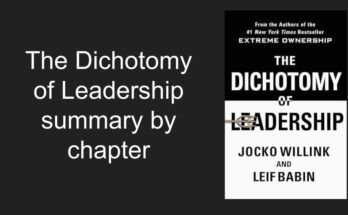In this developing employees who love to learn book summary, I will share the book’s key insights.
Author Linda Honold shares about how to promote learning at work? Why focus on Learning?
Do your employees have the necessary tools, knowledge, and skills to make better decisions? Do you have enough support from the organization? Do they have the confidence to take the initiative?
Linda Honold has answers to all these questions, and it can be wrapped in one word. – Learning.
What are the key takeaway from Developing employees who love to learn book summary?
- Why should you buy this book?
- Why focus on learning?
- What are the characteristics of learning in the workplace?
- What are the workspace learning issues?
- What is a five-step plan to implement a learning system?
Why should you read this book?
You should buy this book to learn how to promote learning at work? Or if you want to create a culture of Learning.
In this book, You will get almost everything you need to know about Learning.
- Characteristics of workplace learning
- What are the workplace learning issues?
- How can you design and implement a learning system in your organization?
- Individual learning tools
- Learning in a group setting
- One-on-one learning and much more.
Developing employees who love to learn book summary is a small collection of critical insights for every HR professional.

Why focus on learning?
We are living in a time of VUCA world, where changes are rapid, information is accessible, and competition is fierce. To survive and thrive in this world, any organization needs to have employees who can think and make decisions like the manager.

All employees contribute to the marketplace. This means they are part of the decision-making and part of implementing the changes.
So How do you make this happen? How can you make employees make decisions like managers? What about the skills employees will require to make decisions?
To answer all questions, organizations need to focus on Learning, where employees learn by changing something and change by learning something.
There are many other benefits to an organization from Learning. We will see a few for the Developing employees who love to learn book summary.
- Increased innovation
- Competitive advantage
- Fewer barriers to communication
- Increased employee retention
- Increased employee motivation
What are the characteristics of learning in the workplace?
To create and maintain a workforce of learners, the first step will be to understand learning characteristics in the workplace.

When we think of learning, the first thing that comes to mind is classroom-type training, while in the organization, most of the Learning comes from the workplace.
- Responsibility of learning resides with the learner
- Learning occurs just in time for use
- Learning begins with knowledge about self
- Learning requires flexibility in approaches
- New learning often involves unlearning
- Learning must be integrated with work
- Learning is a conscious process
What are the workspace learning issues?
While designing and implementing a learning system for organizations, HR professionals face the following issues.
- What is the outcome that we seek?
- What stage of learning is targeted?
- What is the appropriate learning context for the opportunity?
- Which learning style can easily be targeted?
Let’s see these workplace learning issues briefly in developing employees who love to learn book summaries.
What is the outcome that we seek?
In the book, Linda mentioned four outcomes of learning that we can seek.
- Cognitive or knowledge learning develops the understanding of the learner.
- Attitude and value learning changes learners’ perceptions.
- Skill development leads to new abilities and skills.
- Aspiration learning changes a person’s goal.
What stage of learning is targeted?
We all know that different people are at varying levels of Learning. Some will be novices, or some will have somewhat knowledge.

Here are four stages of Learning that are primarily applied to the self-directed learning process
Stage 1 Learners are a novice and not sure of their learning skills. They are not self-directed and need someone to guide them throughout the learning process.
Stage 2 Learners are somewhat in learning mode but require someone to help them become self-directed towards Learning.
Stage 3 Learners have skills and basic knowledge of Learning, and they are just required to know the mechanism with the help of someone.
Stage 4 Learners are highly self-directed. Do they know what they need and how to pursue it?
What is the appropriate learning context for the learning opportunity?
Linda shares four learning contexts for the learning opportunity.
Formal Learning- Like classroom training
Semiformal Learning – Like conference room training where participants can discuss.
Nonformal Learning– takes place in a non-classroom setting,
Informal Learning – is more of a reflection on life experiences.
What is a five-step plan to implement a learning system?
According to Linda, Exploration, envisioning, planning, incubation & development, and implementation and improvement are five-step to implement a learning system in any organization.
In this developing employees who love to learn book summary, I have covered some points, and there is so much content in this book I can’t cover in this summary, you can buy this book from here.


